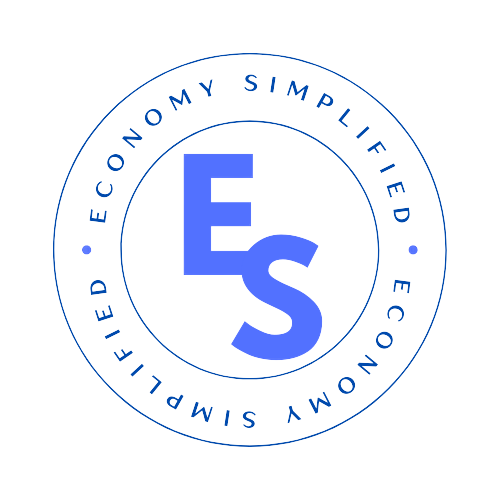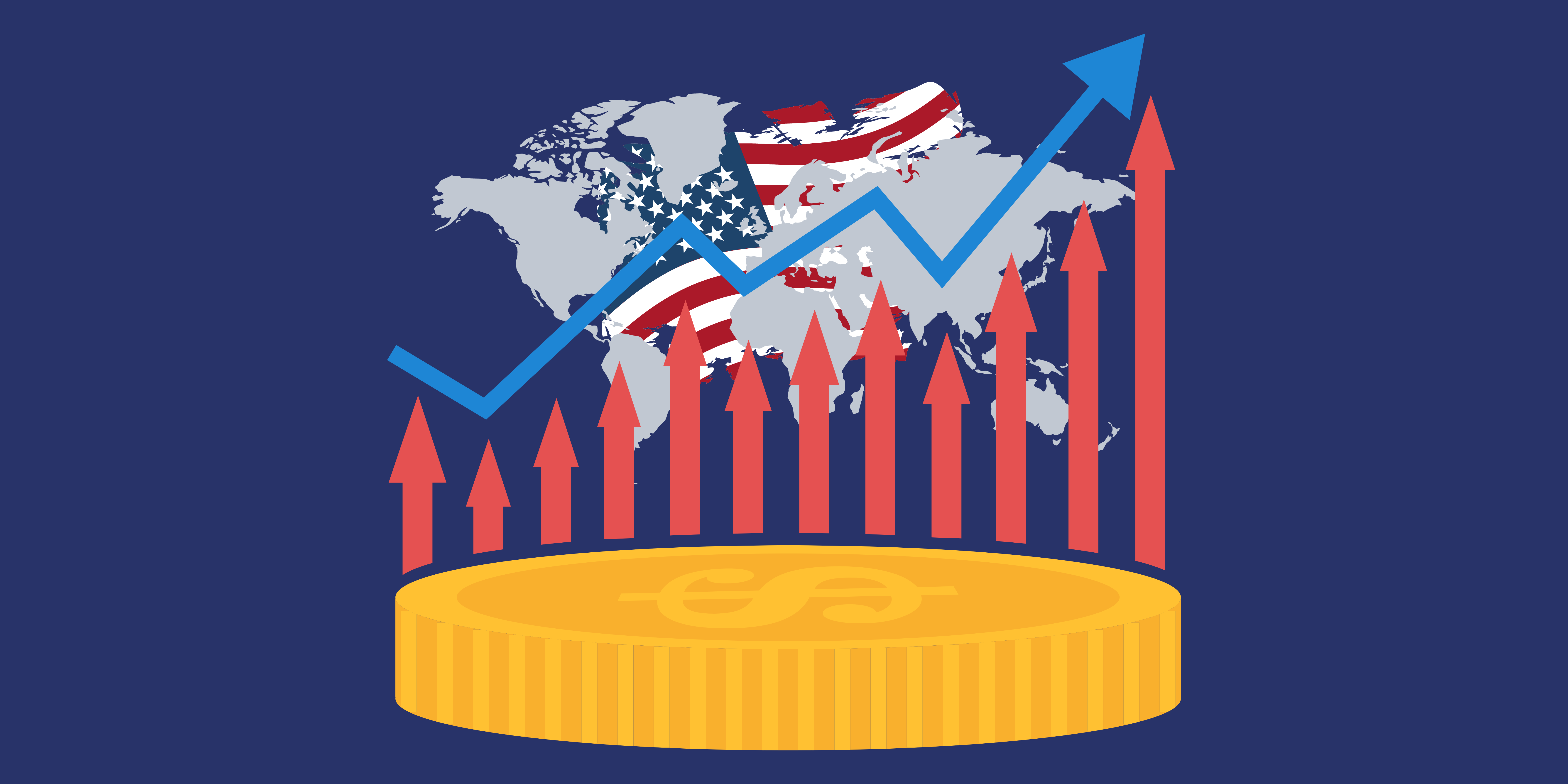Introduction
For a normal human Inflation is just a price rise of various goods and services this matter becomes more serious when the price of daily or weekly items starts increasing it usually affects many areas of the economy and it also takes ugly turns and may also lead to the political crisis.
For example in the 17th century, the Spanish Empire essentially collapsed from inflation without realizing it was occurring also there is a recent example of the Sri Lankan economy crashing and creating political instability in the region and the major reason behind it was inflation.
In the developed economies where the voters are more aware of the inflation rate has a greater impact on the politics of the country as a government that maintained low inflation rates has a high probability of winning the election as compared to the other.
Definition of inflation
The rise in the general level of prices of goods and services
A sustained rise in the general level of prices of goods and services
A persistent increase in the general level of prices of goods and services
An increase in the general level of prices in an economy that is sustained over time
These all are some of the most common academic definitions.
What Is Inflation?
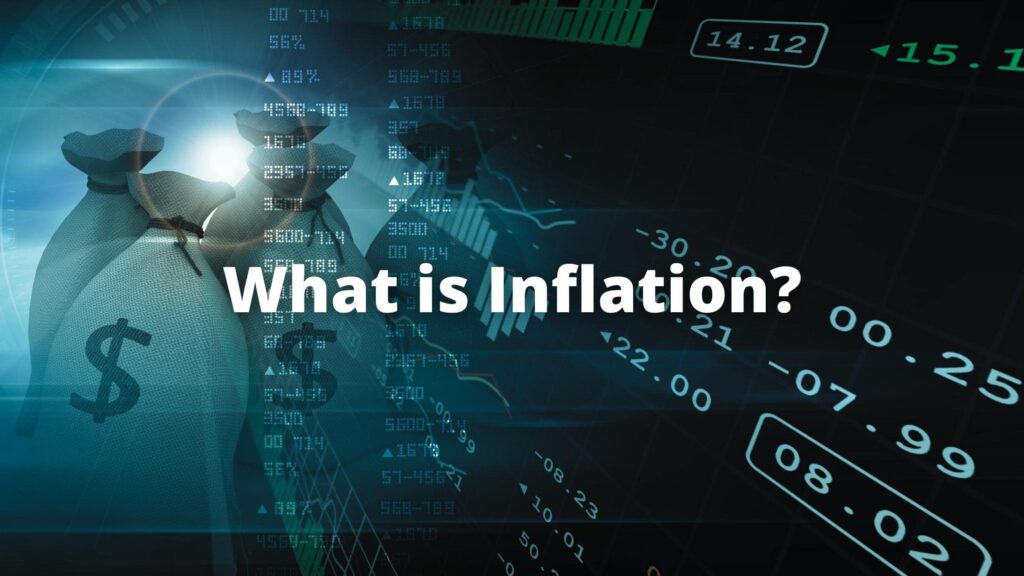
The rise in the price of overall goods and services in a country is called inflation but the rise of certain goods and services does not come under the definition of inflation the impact must be on overall goods and services or especially on things of daily necessity Like food vegetables petrol clothes Medical Services living costs and etc.
If the price of certain goods or services is reduced then we can’t say that is deflation. Deflation means there must be a reduction in the price of overall goods and services.
Normally inflation is present in an economy and the Central Bank Of the country has the major rule in maintaining the rate which depends from country to country for example the average inflation rate in India is around 4% to 6% whereas the average rate in the developed countries is around 2% to 2.3%.
Let’s now know about the causes.
Causes of inflation

Rising prices are the root cause of inflation though this can be attributed to different factors in the context of its causes.
There are various causes for inflation but majorly they can be Categorized into three types.
Demand-pull inflation
Demand full inflation is usually called a situation where there is a sudden rise in the demand for goods and services in the market but there is no rise in the production of that goods and services
If there is sudden rice in-demand for goods and services then there will be a rise in the price or cost of the product in the market as this follows the basic principles of demand and supply
For example, during the Covid crisis, there was a sudden rise in the demand for daily necessities, and the rate of daily necessities where Skyrocketed. There is also another thought as a demand Pull inflation is the creation of extra purchasing power of the customers over the same level of production
These are those set of factors due to which there may be an increase in demand for goods and services in the economy
Increase in government expenditure
An increase in government expenditure results in an increase in the demands of goods and services and there is also a consecutive increase in the price this is because an increase in government expenditure results in putting large money in the hands of the public which means the government will start doing more expenditure putting to affect too much money chasing for too few goods
Rising population
Increasing population also acts as an important factor in pushing up prices because of increased demand especially when the supplies unable to meet the demand.
Black money
A large part of black money is used in buying and selling of real estate in urban areas extensive hoardings and black marketing in essential wage goods such as serial pulses and etc black money, therefore, fuels demand and leads to rise in price.
Changing consumption pattern
Reserve Bank of India RBI puts forward the theory that the inflation problem in India has its root in a shop increase in demand for certain food items that people eat more frequently as income Rises one example is protein-rich food increased consumption of pulses x and poultry products apparently driving up there prices.
Demand-Pull type of inflation is caused due to Increase in aggregate demand in the economy.
Major reasons to support the statement are stated below
- A growing economy or increase in the money supply when Buyers feel confident this kind more and take on more debt this leads to us study an increase in demand which means higher prices
- Inflation or increasing forex reserve a sudden rise in export forces a depreciation of the currency involved
- Government spending or deficit financing by the government when the government spend most freely prices go up
- Due to fiscal stimulus
- Increase borrowing
- Depreciation of rupee
For example, if there is a sudden rise in the salary of the workers then their purchasing power will increase and they can buy more products which ultimately will be leading to rising in demand for those products and the price will an increase
Cost-push inflation
A sudden increase in the cost of raw material or input material of the goods and services leads to cost-push inflation
For example, in recent days we see there has been a shortage of microprocessors and there is a rise in their price as the microprocessor are the major unit for car manufacturers this has led to an increase in the prices of car
There is also another school of thought that says that if there is an increase in the labor cost or wages public borrowing printing of currencies then the production cost of the product gets increases leading to cost-push inflation
For example, consider an iPhone the cost of raw material is 30000 rupees and the labor cost is around 10000 rupees and the profit is 20000 rupees this is the price of an iPhone which is 60000 rupees before the inflation but there is a certain rise in the price of raw material and wages of the worker is also be increase now the raw material cost will be around 40000 rupees the wages is around 20000 and the profit of the company is 20000 final cost of the iPhone is now 80000 rupees as we can see there is an increase of 20000 rupees in the cost of an iPhone due to the raw material and the labor wages this is known as cost-push inflation
The example here has no relation with the product in real life
This type of inflation is caused due to various reasons such as
- The increasing price of input
- Folding and speculation of commodities
- Defective supply chain
- Increase in indirect taxes
- Depreciation of currency
- Crude oil prices fluctuation
- Defective food supply chain
- Low growth of the agriculture sector food inflation interested increased by RBI
Cost-push inflation is considered among the Worst types of inflation because the national income is reduced along with the reduction in supply in a cost-push type of inflation
Factors responsible for cost-push inflation
The reason are at time rise in wages if greater than rise in productivity which leads to increase in the prices of the goods
Increasing indirect taxes also leads to cost push inflation taxes such as customs and excise duty raise the cost of production as the tax are lavided on the commodities
Increase in administrated price such as MSP minimum support price for the food grains petroleum products and etc also leads to inflation as they have a huge share in budget of a common cities
Built-in inflation
This type involves a high demand for wages by the workers which they are addressed by increasing the cause of goods and services for the customers
So in this type of Inflation, there is an increase in the wages of the worker due to which the worker has access amount of money through which they can buy extra goods and services which leads to the shortage and increase in demand ultimately leading to inflation
Other types of inflation
Bottleneck inflation
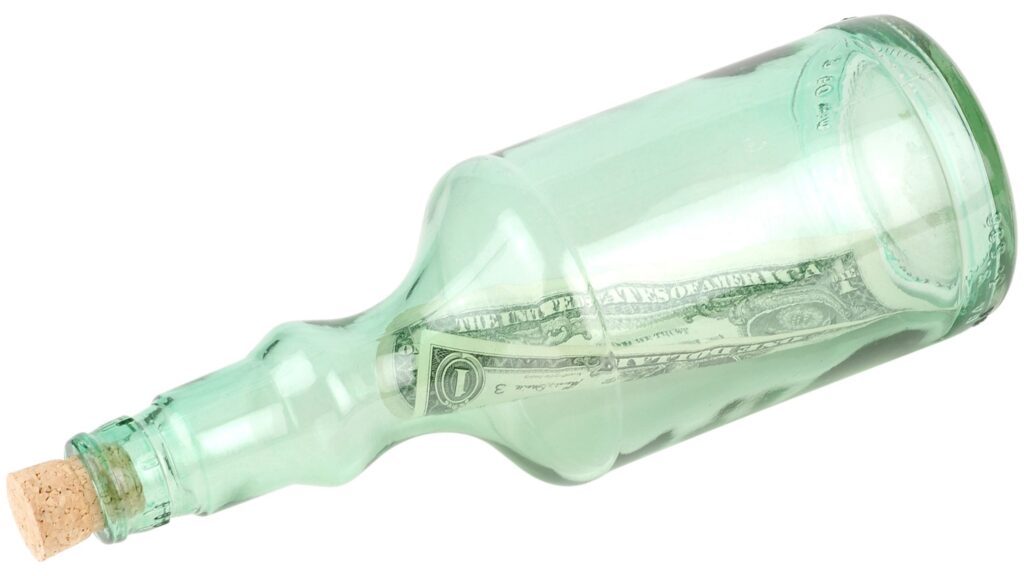
This is supply-side issue created due to change in technology infrastructure and structure due to the supply false drastically where demand remains the same this is called as bottleneck inflation
Now let us know how the inflation in India is been calculated to know this we need to understand what are the price index
Underlying Inflation
This is the Rate of Inflation that is expected to Persuade in the Absence of any type of Economy Slowdown or Economy Slack, Supply Shock, Price Shock, Or any other reasons.
Types of Price Indexes

There are three types of Price Indices
Wholesale price index
The wholesale price index shows the impact of inflation on the overall economy. Till 2014, WPI was used to frame the monetary policies. This is based on wholesale prices of the commodities. There are only a few commodities considered which are also called a basket of commodities. The wholesale prices of the selected commodities of the selected market are considered this won’t take into account the services because services don’t have any wholesale market. This is estimated by the office of economic advisor which comes under the Ministry of Commerce and industry. Earlier it is to be estimated at the weekly interval but now it is been estimated on monthly intervals the base year was considered as 2004 and5 which was changed to 2011 and 12 in 2017
A total of 697 commodities was considered in this index first war primary articles were power and petroleum and manufacture item
The estimation is been used using two ways
1. Point 2 point method
2. 52 weeks average inflation
Consumer Price Index (CPI)
CPI shows an impact on people by showing the changing cost of living here it exactly shows How many changes are there in the cost of living and this shows the Buyer’s point of view.

CPI is used to formulate dearness allowance (DA)
This is now used by the Monetary Policy Committee (MPC) to calculate inflation after the suggestion of Urjit Patel committee since 2014
CPI is estimated at a monthly interval
Here the retail price of the basket of commodities is considered
CPI is calculated for 4 groups of consumers
- CPI for Industrial Workers (CPI-IW)
- CPI for Urban Non-Manual Employees (CPI-UNME)
- CPI for Agriculture Labor (CPI-AL)
- CPI for Rural Labor (CPI-RL)
Producer price index (PPI)
PPI takes into account the increase in the cost till the stage of production it won’t take into account the profit margin taxes or transportation cost distribution cost and etc.
This price index is used by the government to check at which level the problem of inflation is created if it is created at the Customer level then CPI will be relatively high if it is created on the wholesale level or distributor level the WPI will be high and if it is increased at the production level than the PPI will be high
How the inflation is calculated
The Formula to Calculate Inflation

Four Steps to Calculate
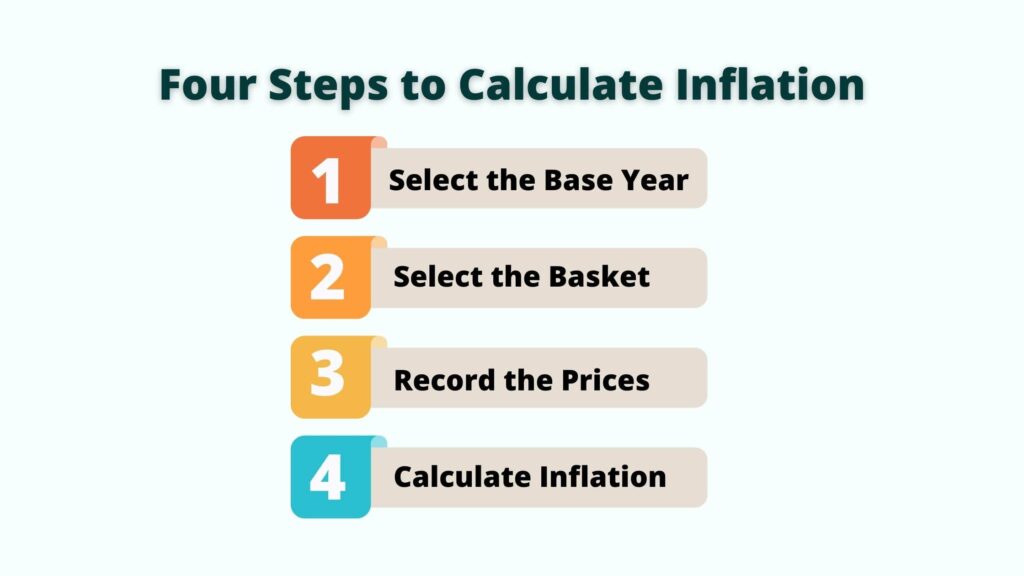
Step 1 Select the Base Year
Step 2 Select the Market Basket (Few Daily Used Commodities)
Step 3 Record the Prices for the Items in the Market Basket
Step 4 Calculate The Rise in Price Using the Formula

Percentage of changes in the price so using this we can calculate the changes in the price between the two years.
Also Check Out the Calculator – US, India
Advantages and Disadvantages of Inflation
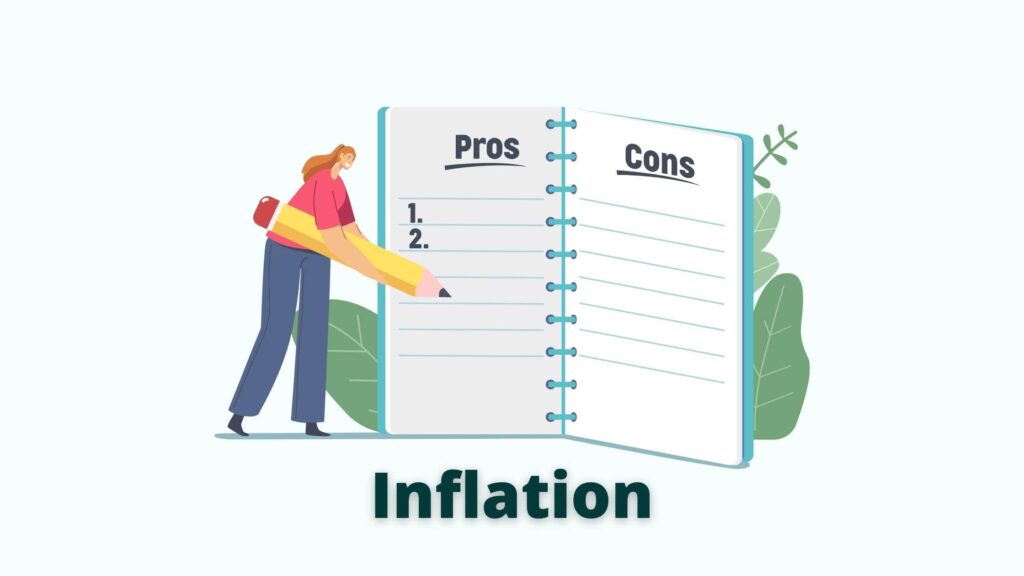
Disadvantages or Negatives of Inflation
Inflation has many Negative effects on the economy.
- These included Buyers will suffer a loss in their purchasing power and real income Unless Customer’s incomes are increased at the same rate of inflation, the cost of living will rise, reducing the standard of living for consumers.
- Workers will experience a fall in their real wages unless their incomes rise at the same rate as inflation
- Businesses will be forced to increase their prices, reacting to the higher costs and excess demand. Businesses may also reduce their workforce to cut labor costs, which may lead to increased rates of unemployment.
- Exporters and importers may suffer a temporary or permanent loss of international competitiveness as it may be difficult to pass on higher production costs in the form of increased prices.
- Savers will experience a decline in the real value of their savings. If nominal interest rates are not equal to the inflation rate.
- investors will find that the higher cost of borrowing, it will make some investments less profitable
- Government expenditure will increase due to the costs of providing goods and services to the public. To compensate. Taxation levels will rise. As taxpayers, incomes are increased and the cost of goods and services increases.
Positive or Advantages of Inflation
The main positive effect of inflation is the rise in asset prices, such as shares and real estate asset price.
Inflation may occur If there is a speculative boom in the share market or housing market caused by excessive levels of demand. Speculators gain from asset Price Inflation by selling their assets at inflated prices before the inevitable collapse of speculative Boom.
Measures to Control Inflation.

Let us understand various ways of measuring Inflation. The Inflation Measured could be taken into consideration for controlling inflation. If not Controlled may develop into hyperinflation. If it is not controlled in the initial stage itself.
Therefore it becomes crucial for the government to undertake various steps to Measure Inflation and Control Inflation.
The basic causes of inflation are excess money supply in the economy and excess purchasing power in the hands of the public.
If both these factors are brought under control, then it is much easy to bring inflation under control.
There are several ways through which inflation could be brought under control. A quick look at a few of these
- Monetary Measures,
- fiscal measures, and
- other measures
Monitory Measures.
These measures are adopted by the central bank of a country Reserve Bank of India in case of India to control the money.
It includes an increase in bank rates, the Sale of Government Securities (GSec) in the open market, and an increase in the Cash Reserve Ratio (CRR).
Let us study it in detail. The monetary measures Increase Bank Rates.
Increase Bank Rates
The bank rate is the interest rate at which a nation’s central bank lends money to the domestic bank. This is typically done to control the money supply in the economy and the banking sector.
A fluctuation in bank rates triggers a ripple effect, as it impacts every sphere of a country’s economy, any upward revision in bank rate by the central bank is an indication that banks should also increase deposit rate as well as base rate or benchmark prime lending rate.
Thus, it can be said that if the Bank Rate is hiked in all likelihood, banks will soon hike their own lending rates to ensure that they continue to make a profit. Borrowing becomes terror.
As interest rate increases it discourages businessmen and customers to take loans. This kind of controlled money supply helps to reduce the inflationary pressure on the economy.
Sale of Government Securities in the open market.
The government controls the money supply by issuing government securities in public government securities are issued by a government to raise the Necessary to pay for its expenses.
These securities are nothing but bonds with a certain maturity period. These securities lock the purchasing power of the public for a certain period.
Therefore, the sale of securities can help regulate the inflation increase in cash reserve.
Increasing Cash Reserve Ratio
CRR means cash reserve ratio banks in India are required to hold a certain proportion of their deposits in the form of cash.
However, Banks do not hold these as cash with themselves but deposit such cash with the Reserve bank of India or RBI OR Federal Reserve in currency chests, which is considered equivalent to holding cash with RBI.
This minimum ratio is the part of the total deposits to be held as cash. Stipulated by the RBI and is known as the CRR Or Cash Reserve Ratio remaining amount with the banks after maintaining cash reserve is called as credit creation capacity of that bank.
For example, when a bank’s deposits increase by a hundred Rupee, and if the cash reserve ratio is 6%.
Banks will have to hold additional six rupees with RBI OR Federal Reserve will be able to use only 94 rupees for investments and lending or credit purpose. Thus higher. The ratio that is CRR lower is the amount that banks will be able to use. For lending and investment, the power of RBI to reduce the lendable amount by increasing the CRR makes it an instrument in the hands of a central bank, through which it can control the amount that banks lend.
Thus, it is a tool used by RBI OR FED to control liquidity in the banking system, and in the country.
A quick look at a few of the Fiscal measures to Control Inflation.
Fiscal measures.
These measures are adopted by the government to affect the changes in purchasing power of the public. They include government expenditure, taxation, public borrowing debt management, and overvaluation of government expenditure
the government releases money in the economy Every time it meets its expenditure. Excess money supply in the economy helps inflation in order to control inflation.
The government has to reduce its expenditure.
Taxation

The Taxation is necessary to take away the excess purchasing power of the public. By the way of taxes, it helps to moderate the demand for goods and services to match with the supply increasing tax rates and imposing some new taxes can control inflation up to some extent,
Public Borrowing
The Government borrows money from households and businessmen by way of bonds.
Public borrowing absorbs the excess purchasing power from the public by mobilizing private savings debt management. Government can control public debt in a strict manner in order to control the Excess money supply in the economy. The Government also controls the credit expansion of commercial banks.
Overvaluation of Government Expenditure
Overvaluation means increasing the value of the domestic currency in terms of foreign currency. Overvaluation discourages foreign individuals and business houses as they are required to pay more for same quantity of goods.
Therefore, the supply of goods and services gets diverted from the foreign markets to the domestic market. It helps to balance demand and supply levels in the domestic market.
Extreme Inflation: Hyperinflation & Stagflation
Inflation develops into hyperinflation. If it is not controlled in the initial stage itself, there are several ways through which inflation could be brought under control. Namely monetary measures, fiscal measures. And Other Measures.
What is Hyperinflation?
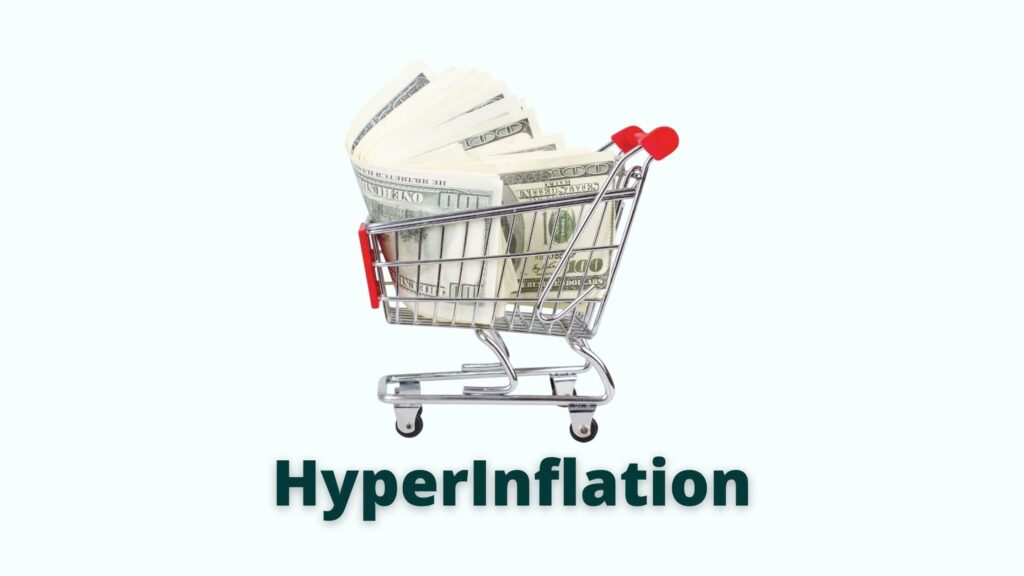
Hyperinflation is used to describe situations where the prices of goods and services rise uncontrollably over a defined time period. In other words, hyperinflation is rapid inflation.
Hyperinflation is when the prices of goods and services rise more than 50% per month. At that rate, a loaf of bread could cost one amount in the morning and a higher one in the afternoon.
Causes of Hyperinflation
Causes of Hyperinflation has two main causes an Increase in Money Supply and Demand-Pull Inflation.
A sudden rise in exports or more government spending hyperinflation tends to occur during a period of economic turmoil or depression.
Countries that have suffered horrendous Inflation are Germany, Venezuela, Zimbabwe, and the United States during the civil war.
Venezuela is still trying to cope with hyperinflation in the present day
Effects
To Secure Tomorrow people begin holding which creates shortages. It starts with Durable goods. If hyperinflation continues, people hold perishable goods like bread and milk. These daily supplies become short and the economy falls apart.
People lose their life savings as cash becomes worth. For that reason, the elderly are the most vulnerable to hyperinflation.
Hyperinflation Turns the value of the currency plummeting in foreign exchange markets. The nation’s importers go out of business as the cost of foreign goods skyrockets.
However, there are two winners in hyperinflation.
Two Winners
- Loans Buyer
- Exporters
The first are those who took out loans and find that higher prices make their debt worthless by comparison until it is virtually wiped out,
Exporters are also winners because the falling value of the local currency makes exports cheaper compared to foreign competitors. Additionally, exporters receive hard foreign currency which increases in value as the local currency falls.
What is stagflation?
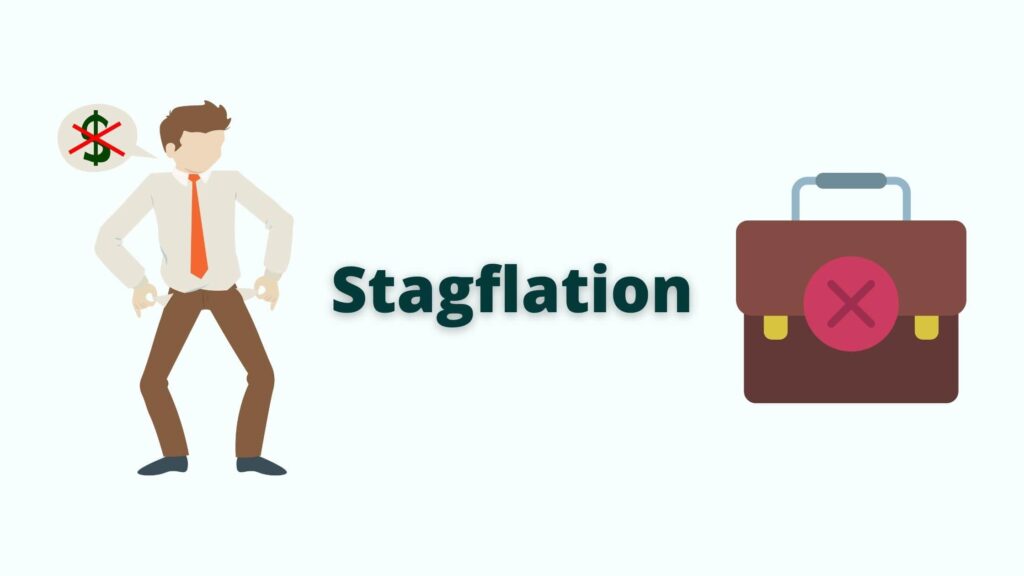
Stagflation is an economic condition with persistently higher inflation rate combined with high unemployment and relatively stagnant demand for products.
Let’s take a closer look,
Causes of Stagflation
The causes of stagflation are not well understood, but economists believe it’s linked to a supply shock resulting in a rapid increase in prices or government policies that increase the money supply too quickly.
Typically high levels of inflation are correlated with lower unemployment rates, but with stagflation, unemployment and inflation are high.
A famous example of stagflation in modern economic history occurred in the 1970s and early 1980s in the USA. Inflation was increasing through the 1970s, but by the time we got to the late 1970s, it was no longer helping to reduce unemployment.
So we got stagflation high inflation and unemployment together. Then in the early 1980s under Ronald Reagan inflation fell. Unfortunately, it came hand in hand with a very serious recession in 1981 and 82.
So we can see that getting out of stagflation is difficult because Monetary Policy and Fiscal Policies are not very effective at fighting supply shocks.
Even if the cause is not a supply shock. But Monetary policy can’t fight both unemployment and inflation at the same time.
Policies aimed at lowering inflation, in the long run, will typically increase unemployment in the short term, And policies aimed at lowering unemployment in the short run translate to even higher inflation in the long run.
Phillips Curve is the best way to under the Stagflation Concept
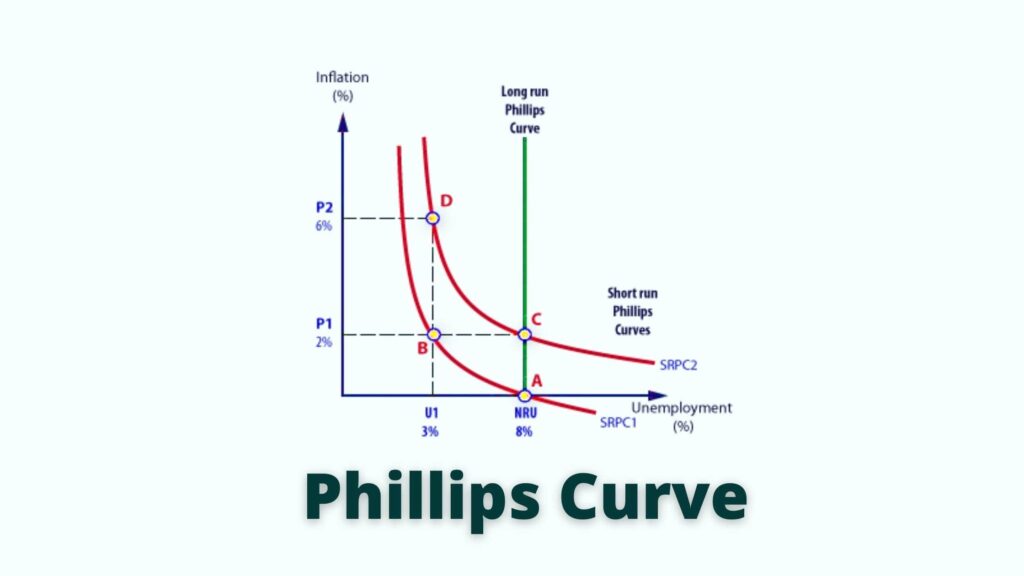
Why Is Inflation So High Right Now?
Last year when the Federal Reserve (fed) lowered interest rates, everyone knew that inflation is coming, but the fed said that we should not worry because it is just a little above 2%. But if we take a look at what’s happening, prices have risen dramatically since then.
We don’t just mean asset prices like houses, stocks, etc but rather Buying prices as well. Inflation in the US has jumped to the highest rate since 2008 because the economy is recovering from the pandemic.
People are getting back to work, which means people are spending more than ever. The consumer prices index rose at an annual rate of 5% in may up from 4.2% in April and the highest since August 2008.
Where most people are getting hurt as a result of inflation. Some people are making money out of it because every problem presents an opportunity.
The question is, is there a way to profit out of this inflation? The answer is yes. So let’s take a look at different ways. Rich people are making millions out of this inflation
What Investments Beat Inflation?

- Hold Real Estate.
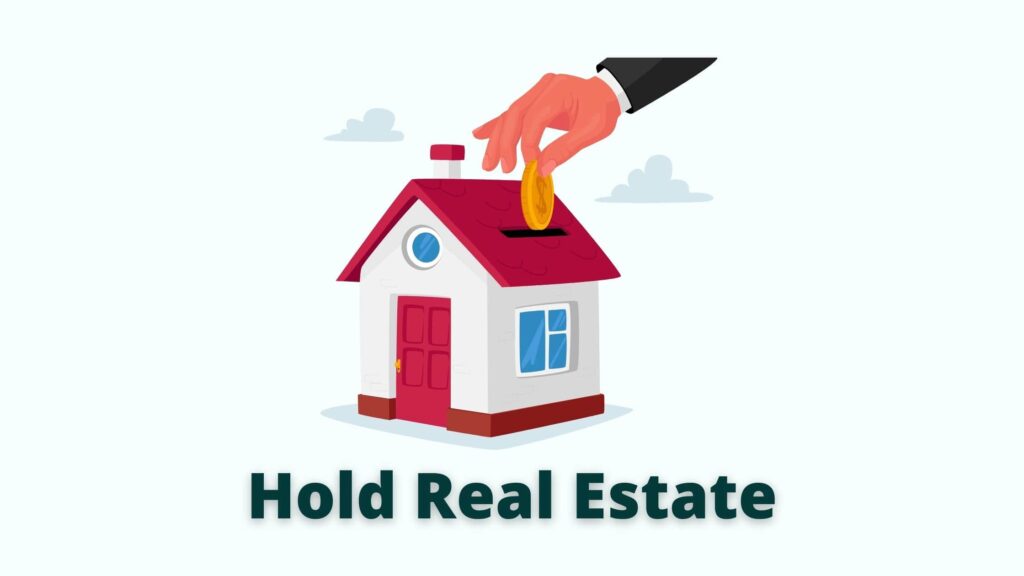
What most people don’t understand about currencies is that it’s another commodity in the market. And its prices are determined by demand and supply among many different factors.
Of course, imagine a hypothetical example where you have $10 in the entire economy on one side and 10 houses on the other.
In this hypothetical example, a single house will cost $1, but if we pour an extra $10 into this market, there will. $20, but still 10 houses, which will raise house prices where a single house will cost $2. That’s a simple way to understand inflation.
Last year, when the economy was on the brink of collapse, the fed decided to throw trillions of dollars into the economy to prevent a depression by distributing stimulus checks and buying Corporate Bonds.
22% of the US dollars that are in the market currently have been printed in 2020. Anyone with a basic degree in economics understood that inflation is on its way.
That’s why whoever could afford the house back then immediately invested in real estate instead of holding cash, especially since interest rates were at their lowest point.
It doesn’t matter. What’s the real rate of inflation, whether it’s 2.4% or 3.4% because house prices grew by 15% And by some estimates, even by 18 to 20%, This means real estate investors. Didn’t just beat inflation, but rather, also profited enormously.
But the smartest investors didn’t just buy houses but took mortgages because leverage turns good deals into great deals, especially since interest rates were a drop bottle.
2. Debt
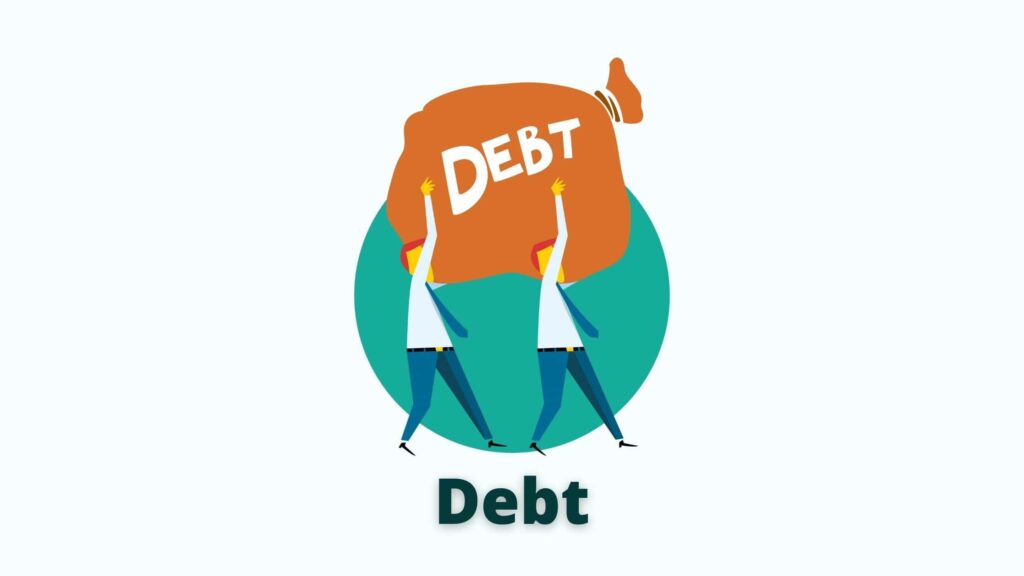
That many of you might have a really negative opinion about debt, but that can be really good, especially when there is inflation.
If a dollar today is worth more than a dollar tomorrow, that means if we borrow a dollar today and return it tomorrow, I have made a profit. The median house price today is around $350,000.
But 20 years ago, it was less than half of that at around $150,000 because every year, the real value of the dollar falls, which means the same $150,000, 20 years ago today worth $350,000.
That’s why when the fed lowered interest rates and started buying corporate bones, guess who started borrowing all that money?
World’s largest companies, such as Amazon, Facebook, Microsoft, Apple, and so on. Although these companies don’t need that money at all.
Apple is sitting on a pile of cash worth over 200 billion, but it’s still borrowed money because why use your own money? When you can just borrow them.
For example, We get at least a 10% return and borrow money at just 1%.
Even if you make a 5% rate on that borrowed money, by investing it into our operations, we’re still making a 4% profit on top of that. When we borrow money, we get all of these tax benefits. So we’ll also save on taxes.
If the interest rate is lower than inflation, any money we borrow is theoretically a profit.
3. Investment in Gold.

What makes gold unique is that it has always been that asset, that preserves wealth, especially during a crisis.
Here’s how it works. The woman in the future seems unpredictable. Gold prices rise in 2007 gold prices rose from around $600 to thousand dollars because of the 2008 crash and investors Panicked and immediately started buying gold.
The US dollar might lose its value and even become worthless one day, but not the Gold while the US dollar has lost over 90% of its value in the last hundred years, Gold has kept its value since the beginning of civilization.
In 2010 investors panicked again and started buying gold aggressively to the point where gold prices hit a record $1,900 But since then the economy has stabilized and the Gold bubble has burst.
When the economy seems like it’s going to grow investors, usually don’t buy gold and invest in assets such as stocks. That’s why during Stable Periods Gold prices often fall, but in 2019, when the US started a trade war with China, Gold prices started rising again and the pandemic made it worse. Gold prices crossed $2,000 for the first time.
If we take a look at history, gold has always been a great way to take advantage out of inflation. In 1973, a single us dollar was a lot of money, but today it barely can get you even candy, but gold prices have risen from around a hundred dollars in 1973 to $1,800.
But I’m not a big fan of gold because it’s a passive asset. It just sits there and shines. Well, stocks of real estate produce something like rental income. It’s an active asset that actually provides a service or a product, but why do stocks keep rising? Because the company’s behind them Keep growing.
Conclusion
Inflation has been with Societies for Many Centuries but the Ways of Tackling this Problem has been Evolved with increased Awareness but still, this Problem is not Completely Resolved. We need to Learn More and analyze this Problem for the benefit of society as a whole.
Leave Your Thoughts on it in the Comment Box Below.
FAQ’s
What is inflation, in simple terms?
Inflation is a sustained rise in the general level of prices of goods and services
What are the effects of inflation?
Inflation has more Negative Effects then Positive Some of Them are
1. Buyers will suffer a loss in their purchasing power and real income
2. Workers will experience a fall in their real wages
3. Businesses will be forced to increase their prices
4. Businesses may also reduce their workforce to cut labor costs
5. Increased rates of unemployment.
6. Exporters and importers may suffer a temporary or permanent loss
7. Investors will find that the higher cost of borrowing
8. Government expenditure will increase
9. Taxation levels will rise
